Today we walk among the ruins of an ancient kingdom that time forgot.
The ruins of Hampi
Hampi is an ancient city on the banks of the Tungabhadra River in Hospet taluk of Bellary district in Karnataka. The landscape of this once great city is defined by hundreds of granite boulders, distributed as piles of rocks of different shapes and sizes. But it is not just the unique landscape that has brought me here. The former capital of the Vijayanagara Empire is like an ocean of more than 1600 man-made stone structures, spread over an area of 25 square kilometers.
Once South India’s wealthiest and most powerful city, it was sacked in 1565 CE by the armies of the Bahamani sultanates. For years, the city lay abandoned until it was rediscovered by the British in the mid-nineteenth century, who went on to loot it further for its priceless ancient statues. In this journal, I will take you on a photo journey of the still preserved 800-year-old temples, market streets, bath pools, watchtowers, palaces, and elephant stables which are sure to take you back in time.
Brief history of Hampi
Hampi used to be the capital of the Vijaynagara Empire where music, art, and sculpture flourished. But long before it was Hampi, it was also Kishkindha, the capital of the mighty warrior Vali. Parts of the Ramanayana have unfolded at various sites around this ancient city. The great sage Madhavacharya – the illustrious commentator of the four Vedas, is also said to have lived on the banks of the Tungabhadra around Hampi.
There are numerous stories about the founding of Hampi. One of the most prominent among them is the tale of brothers Harihara and Bukka Raya, who used to serve under the king of Warangal. Not much is known about them before this time of their life and the stories after, also have their variations.
In the early 14th century CE, South India was subjected to repeated invasions led by the Delhi Sultanate. The Muhammadans had been making inroads into India right from 1001 CE. War followed war, and from that period North India knew no rest. By the end of 13th century, the Mohammedans had begun pressing towards the southern kingdoms. When Warangal was invaded and destroyed in 1323 CE, the brothers fled the kingdom and took service under the chief of Anegundi. Anegundi was not a kingdom, it was a small fortified town, surrounded by lofty hills of granite.
Nicolo, an Italian traveller who visited Vijaynagar in 1420 CE writes about the great city of Bizengali (Bijanagar) situated near very steep mountains. In this city there are estimated to be 90,000 men fit to bear arms.
The brothers were smart and rose in ranks under the service of the chief. Harihara became a Mantri (minister) and his brother Bukka Raya came to be the treasurer under the services of the chief of Anegundi. According to Nuniz, who gives a definitive account of Vijayanagar, Muhammad Tuglaq, having reduced Gujrat, marched southwards through the western ghats and attacked Anegundi. In 1334, Anegundi fell.
Its chief was slain along with all the members of his family. After a futile attempt to govern this territory by means of a deputy, Tuglaq restored the city to the Hindus and promoted the brothers to Rajah and Mantri (minister) respectively.
Harihara Raya is considered the first king of Vijayanagar. He reigned between 1336-1350. The first decision he took was to move their base further south on the southern bank of the Tungabhadra. The river would for some time provide better security from the ever-marauding Muslims.
Seeing the horror brought on by the marauding Muslims, the brothers pledged themselves to the cause of their motherland and their religion. It was by luck or by fate that by the time the early Vijaynagar rulers appeared on the political horizon, the emperors of Delhi were in a decaying stage with civil wars rampant among them. Sick of the tyranny and excesses of Tuglaq, the Deccan rulers revolted in 1347, and the independent kingdom of the Bahmants was for a time firmly established.
Princess Gangambika of Vijayanagara writes about these grave times..
“The Tambraparni river, whose waters were once white with the sandal paste flowing from the breasts of the young girls now flows red with the blood of the cows killed by the cruel muslims”
Bukka Raya, succeeded Harihara on the throne. He defeated the Sultanate of Madurai in 1371 and extended his territory into the south all the way to Rameswaram. His son, Kumara Kampana campaigned with him and their efforts were recorded in the Sanskrit work Madura Vijayam written by his wife Gangambika. Bukka Raya’s 21-year reign (1356–77) the kingdom prospered and continued to expand as Bukka Raya conquered most of the kingdoms of southern India, continually expanding the territory of the empire.
Hampi saw many rulers after Bukka and it rose to its zenith during the reign of the Vijayanagara Kings. Among the kings of Vijayanagara, Krishnadeva Raya ( reign 1509-1529), a man of many abilities and sharp intellect, deserves a special mention. He successfully ruled the region and took the kingdom to new heights. It was during his reign that the city truly flourished and came to symbolize the medieval political culture of south India.
When I was a kid, I was greatly inspired by the stories of one Tenali Rama, a witty jester in the court of the emperor, Krishnadeva Raya.
Ride to Hampi from Toranagallu
I and my wife, Mani were staying at the Hyatt Place Hampi in Torangullu. Hyatt Place Hampi is located in the beautiful landscaped Vidyanagar township, some 27 km away from Hampi and it takes around an hour to reach Hampi.
Hospet is normally preferred for staying when you visit Hampi as it takes a lot less time and there are lots of transport choices easily available. At times it felt we would have been better placed had we booked a hotel in Hospet, but after the amazing service we received at Hyatt, there is no doubt that if we were to visit Hampi again, this would definitely be the place to stay.
The best way to enjoy Hampi is on foot or a bicycle, but since we were staying quite far away in Torangullu, we had to take a rental car. I had already gathered most of the information about the area and the route we would take using Google Maps. From my understanding of the place, it was going to be a long walk, so we started a little late in the day at 11 a.m. from Hyatt Place Hampi.
It was a lazy ride from Toranagallu to Hampi with long stretches of open space and some far-away mountain ranges in the west.
Queen’s Bath
The first piece of history we encountered was the Queen’s Bath. The driver was not accustomed to this place, which resulted in some problems later during the day. He was going past the Royal Enclosure on the Kamalapur-Hampi main road when I spotted it and asked him to stop.
As we entered the complex we were greeted by long high-arch corridors running all around a square pool. The balconies are decorated with three tiny windows each supported by four columns that look like lotus buds. The ceilings were decorated with floral patterns. The center of the pool is about 6 ft. deep and fully open to the sky. The sunlight creates a beautiful ambient glow inside the complex. The Queen’s Bath is surrounded by a moat, used to supply fresh water to the pool. And ahem.. according to history, the only male allowed inside was the King himself.
Chandrasekhara Temple
We walked past the Queen’s Bath towards the Chandrasekhara Temple. The entrance to the temple is magnificent, though in ruins. Inside the premises is a small temple dedicated to the Sun and Moon. The front of the temple is adorned with many columns with depictions of Surya (Sun) and Krishna (an avatar of Hindu God Vishnu). There is very little visibility inside and the idols have been moved to the nearby museum to protect them from vandalism or theft.
Octagonal Bath
Beyond the temple, we could see quite a few more structures sprouting all over the area and we decided to walk on rather than go back to the car. The sun was beating hard down upon us, but we were energized by the mystery of the place. We also saw some local farmers coming down the trail. Some 200 meters away along the trail, we reached the Octagonal Bath. This structure, as the name indicates, is a big bathing area in the shape of an octagon.
The Octagonal Bath was a public bath for the residents of the ruined palaces nearby
From here we could see a cluster of palace bases and we just kept walking towards them. The upper structures of these palaces were generally constructed with bricks and now torn down or weathered over the years. Walking past them we reached the Saraswati Temple. Created in 1554 CE, the temple has some intricate carvings of Krishna, Hanuman & Narasimha.
Royal Enclosure
From the Saraswati temple, we kept going west till we hit the Royal Enclosure area. Not much remains of the Royal Enclosure which was once the Vijayanagara kingdom’s seat of power. The remains of a huge base is all that confirms a massive palace once stood here. In its prime, it housed as many as 45 buildings including the durbar halls, platform, tanks, underground chambers, and temples.
As with all the other features constructed by the Vijayanagara kings, the Royal Enclosure makes ample use of granite and soapstone. All the palaces face the east or the north and were built on raised granite platforms. These platforms feature multiple tiers and are decorated with carved details of flowers, geese, demon faces, elephants, and human figures.
Hazara Rama Temple
The road in front of the Royal Enclosure keeps going north towards the Hazara Rama Temple. It is the only temple situated between the residential and the ceremonial enclosures. Dedicated to Vishnu in his avatar of Rama, this 15th-century temple is known for its sculpted friezes depicting the tale of Ramayana. The temple has a sprawling lawn on its northern side. Two gateways provide access to the temple compound.
Hazara Rama Temple was built in the early part of the 15th century by the then king of Vijayanagara, Devaraya II. It was originally built as a simple structure. It consisted of only a sanctum, a pillared hall, and an Ardha mandapa. Later the temple structure was renovated to add an open porch and beautiful pillars.
Running around the main shrine, you can see the narrative sculptures of Rama and his wife Sita. Created so close to the Royal enclosure, it undoubtedly enjoyed royal patronage.
The interior of the temple has ornately sculpted columns. The temple has an entrance mandapa and a yajna ceremony hall, whose ceiling is designed to ventilate fumes and smoke through the roof. Inside the main mandapa are four intricately carved pillars in the Hoysala style. These carvings include depictions of Rama, Lakshmana, and Sita, Durga as Mahishasuramardini, and Shiva-Parvati. An empty pedestal with three holes signifies that the temple once had idols of Rama, Lakshmana, and Sita.
Not to leave behind the stories of Luv & Kush, the sons of Rama, the Devi shrine at the back tells their tale.
From here Mani pointed out to another cluster of buildings around half a kilometer away. We kept walking for some 20 minutes on the same trail and we reached an underground temple.
It was called Madhava Temple, popularly known as the Ranga Temple. The temple is known for the 3 mt tall Hanuman sculpture. The grounds of this temple have a Ranga Mantapa which was exclusively used for musical and dance performances when Hampi flourished. The pillars of Ranga Mantapa have structural depictions of Garuda, Vitthala, Surya, Balakrishna & Hanuman.
Zenana Enclosure
The Zenana Enclosure is just beside the Madhava Temple but we had ended up at the rear gate. The security guard wouldn’t let us in from the rear entrance and we had to go all around the enclosure, to the front to get the tickets.
The Zenana Enclosure is a large stone-walled compound marked by 3 huge watchtowers. The name ‘zanana‘ which means ‘lady’ in Hindi, kind of suggests that this whole enclosure was a separate area only for women and the watchtowers were more of a lookout from where the women could enjoy the activities surrounding the enclosure.
The Watch Towers along the fortified walls were a much sought after entertainment for the noblewomen residing inside the Zenana Enclosure from where they would pry at the bustling city life.
We saw a few foreigners checking out the ruins over here. Right beside the main entrance on the left is a museum, but it is closed on Fridays. The remains of a large building stands opposite, of which only the three-tiered base remains. The structure on top of the base was probably built of bricks or wood, which was destroyed over the years. Historians tell us that this was a palace for the Queens of Vijayanagar.
Lotus Mahal
At the center of the Zenana Enclosure, lies the Lotus Mahal. The two-storied building was a non-religious building, a kind of a resting place for the Queens and other similarly privileged women meant. The upper storey is provided with numerous small arched windows.
Located at the center of the Zenana Enclosure, amid manicured lawns, the Lotus Mahal was a social gathering place for the noblewomen of Vijayanagar
Beyond the Lotus Mahal, a small gate led us into an open area where you can find a row of huge domed chambers with eleven tall arched openings alternating with walls of blind arches. Thousands of elephants and innumerable army men, on foot and horses, were kept and maintained, to protect the vast kingdom.
Elephant Stables
Only the royal elephants were kept here. Frankly, I have never heard of elephant stables, let alone seen one. Those elephants must have had a charmed life. The open area in front of the building used to be a parade ground for the elephants. The guards’ barracks are located right next to the Elephant stables.
The elephant stable was constructed in the 15th century, during the reign of the Vijayanagara Empire. As the name indicates, the stable was constructed to house the royal elephants of the Vijayanagara Empire.
Cesar Fredric, the medieval travellar, says that he had seen many courts but never anything to compare. The Rayas seem to have kept in the city itself for purposes of defence and protection some 100,000 infantry, 30,000 cavalary and about 4000 elephants, with suitable number of guns and artillery.
The elaborate structure indicates the importance attached to the royal elephants during those days. It also suggests the amazing craftsmanship of the artisans of that era.
We were famished after the long walk in the sun and had some cool tender coconut water. After taking a breather, we walked back towards the entrance.
There aren’t many stores located nearby. Only one shop is there near the entrance and I was able to obtain a bottle of cold mineral water. Our ride was still at the Queen’s bath where we had left it. I called the driver but the novice he was, he took 30 mins to come which should have taken 5 mins. Once he was back, we headed towards the Narasimha Temple.
Narasimha Temple
Constructed in 1528 CE under the supervision of King Krishnadeva Raya, the Laxminarasimha Temple is dedicated to Lord Narasimha, one of the nine avatars of Vishnu. According to mythology, Vishnu had taken the form of a human with the head of a lion to kill the asura king Hiranyakashyapu.
The story goes… when the asura king Hiranyakashyapu learned of the death of his younger brother at the hands of Vishnu in the form of Varaha, he swore revenge. He vowed to make himself mightier than Vishnu. He performed rigorous penance to please Brahma, seeking the boon of immortality. Brahma declined so he continued his penance taking it to even harsher levels and eventually Brahma was forced to grant him an alternate boon. Hiranyakashyapu asked of him – “Then let not death come to me at night or day; by weapon or hand; by club or sword, nor spear nor bow; on earth or heaven, nor the Nether world below; by god, demon, snake nor a being as low; by human or beast, nor any other foe; neither in nor out may Death smite me his blow.” Once he got this boon, he started vandalizing Heaven and Earth. Eventually, Vishnu took the avatar of Narasimha, which was neither man nor an animal, to finally kill him.
According to mythology, the lion face of Narasimha is the 4th incarnation of Vishnu and is also sometimes called Unganarasimha (the ferocious Narasimha) This statue of Narasimha is carved out of a single piece of granite and is the biggest statue in Hampi at 6.7 ft tall. Narasimha is depicted sitting on the coil of a giant seven-headed snake called the Sheshnaga, king of the snakes. The heads of the snake act as a hood above his head.
The original statue is said to have contained an idol of goddess Lakshmi, consort of Vishnu, sitting on his lap. But this statue has been damaged seriously during the raids leading to the fall of Vijayanagara.
Krishna Temple & Baazaar
About 200 meters north of Narasimha Temple is the Balakrishna Temple. Carved pillars at the Balakrishna Temple, depict stories from the Bhagavat Gita. The Balakrishna Temple was created around 1513.
This is one of the temples that has its sikhara somewhat intact. It goes to show the detailing involved in the making of the top section. I can just imagine how it must have felt to walk around the temple city when all its structures were still intact.
The Balakrishna Temple is a complex with many sub-shrines and halls. The interior of these temples is poorly lit with extremely rare windows. Today we can stroll into these temples, but during those days the divinity of the sacred idol was known only to a handful of priests and noblemen. Public display of the idol was strictly forbidden.
One of the prominent historical site, the Balakrishna temple in Hampi was built by the Krishnadevaraya in 1513
Just opposite the temple lies the Krishna Bazaar, a trading place for diamonds and other gems. As we went down the steps, we saw some horses were grazing in the ruins of the bazaar. The vast array of bazaars – semi-intact structures are a direct evidence of the city’s inclination towards trade and its associated methods.
For nearly three centuries, the city of Vijaynagar grew rapidly in wealth and importance. It was talked of as the most splendid city in the world by all those who had the fortune to visit it personally. Traders from Portugal, Persia, Italy, and even Russia came to Hampi and chronicled the grand lifestyle of the city.
Destruction of Hampi
During Krishnadeva Raya’s rule, this trade-oriented city developed and thrived. Cotton, spices, and textiles were traded with the Europeans. The Portuguese traders and the king shared a good and friendly relationship that thrived on mutual benefit and the exchange of goods continuously took place between the two. The Portuguese particularly traded horses for acquiring many items from Hampi.
Domingo Paes, a Portuguese traveler who had visited the metropolis around 1520, had compared Hampi’s size to that of Rome. He wrote about what he has seen in Hampi: its lavish markets and fairs, its rich merchants, streets, rows of houses, and even its food. He wrote about its irrigation and its many ports where the Portuguese had set up factories. His accounts are one of the most detailed and well explained. It is known that such was the wealth of Hampi that gold was openly sold in the market, like any other product.
Barely 35 years after the death of Krishnadeva Raya, the Deccan Sultanate, consisting of Ahmad Nagar, Berar, Bidar, Bijapur, and Golkonda attacked and defeated the army of Vijayanagar Empire in the famous Battle of Talikota in January 1565. At the time of the Muslim conquest, Hampi was a city of rich artistic tradition. Hindu shrines were to be found by almost every hillside. Two hundred years of wealth and planning are reflected in the layout of Vijayanagara.
To safeguard against the looting Muslim armies, Harihara and kings following him gave prime importance to protection against invasion. The city was built like a fortress, lined with massive stone walls, with watchtowers scattered across its length and breadth. The chain of boulder hills also made a natural fortress around the vast area. Regardless of their business or intention, visitors to the city had to travel through the heavily fortified and protected area before reaching the town center. Massive fortifications stood at every possible entry into the main metropolis and in other crucial locations. Watch posts were built along the roads, gates, and hilltops to gain maximum visibility. Despite all these precautions, the Deccan Muslim Confederacy still invaded Vijayanagara and plundered, and desecrated the grandeur of Hampi.
They slaughtered people without mercy, broke down the palaces and temples, and wreaked such savage vengeance on the city that with the exception of a few stone buildings and walls, nothing now remains. With this, the last significant Hindu kingdom in the Deccan came to an end. After the battle of Talikota, Tirumala Raya, the last of the Vijayanagara kings escaped, accompanied by the surviving members of the royal family along with 550 elephants laden with treasures in gold and precious stones to the fortress of Penunkonda.
They still left behind the treasures that lay in several other palaces and underground treasure chambers, waiting to be plundered. After the tragedy at Talikota, hordes of dacoits pounced upon the city and subjected the stores and shops to plunder leaving the city in ruins. The scenes which followed the sacking of this royal city were most heart-rending and painful to read. Judging from the amount of destruction of the palaces, the conquering troops must have spent months pillaging the city. Houses of the common folk, made from mud and bricks were completely destroyed. Only the structures built of solid stones survived. So thorough was the devastation that future rulers, despite several attempts could never re-establish it.
Monuments on Hemkuta Hill
Idols of Kadalekalu Ganesha (Elephant God), on the Hemkuta Hill, Sasivekalu Ganesha, in another part, showcase how massive structures were created out of a single piece of rock. Parts of these temple complexes also contain numerous carvings of mythological importance.
The Hemakuta hill houses the most well-preserved pre-Vijayanagara and early-Vijayanagara temples of Hampi. This hill is sprinkled generously with a large number of temples, archways, and pavilions. The whole of the hill was fortified with tall wide stonewalls, the ruined remains of which can be still be seen.
These boulders date back to more than 3 billion years and are believed to be the earliest solidified rock on the planet.
Read more about the monuments on Hemkuta Hill.
Virupaksha Temple
As we started our descent from Hemkuta Hill, we could see the Virupaksha temple complex. This temple predates the Vijayanagara kings and is still an active temple in Hampi. I was pretty tired by the time we reached Virupaksha temple. There was quite a crowd around and a few devotees were placing diyas on the road. It being Dusshera in India, they probably had some festivities planned for the evening.
Read more about the Virupaksha Temple.
We just watched the temple from outside. I had gotten thirsty and we had left the Water bottle in the car at the Balakrishna Temple. I tried calling the driver but the network was unavailable. We took a short walk on the Hampi bazaar street. On the left was a row of shops. I found a store that was selling mineral water apart from some other snacks. After taking in a few gulps we walked towards the auto/car parking area. We still didn’t have any phone network, so we hired an auto to drive us back to Balakrishna Temple. On reaching the car I asked the driver to take us to our last stop of the day, Vitthala Temple.
He told us that to reach Vithalla Temple we had to take a long walk along the Tungabhadra. it was only later we came to know that there is also a route where you can drive all the way to the Vittala Temple. On the way, we chanced upon another temple in ruins. It is one of the hidden temples of Hampi located beyond the Matanga hills. The location of the temple is secluded and off the more traveled path, the temple is much less crowded as compared to many other tourist attractions in Hampi.
We got down at Virupaksha Temple parking lot and walked back along Hampi Bazaar street. At the end of the street, there was a line of decorated steps leading to a monolithic Nandi statue.
River Tungabhadra
We asked a few locals and they guided us on the trail. After some time we reached a path made of stones parallel to the banks of the Tungabhadra river. The river at this point is forced into a narrow gorge, hemmed by granite hills. Monsoon had just ended but the river was still very calm. After walking for about 30 min we reached a beautiful spot on the banks of the river. Over the years, the flowing water has polished the rocks that border the river. The river was also known as Pampa in ancient times. We sat there for a few minutes enjoying the late afternoon and cooling our heels in the flowing waters of Tungabhadra. After some rest, we started back on the trail. Quite a few people were coming back on the same trail, so it wasn’t difficult to follow.
Achyutaraya Temple
The Achyuta Raya Temple was built in 1534 CE during the rule of Achyuta Deva Raya, one of the emperors of the Vijayanagara Empire. He came to power by succeeding his elder brother Krishna Deva Raya in the year 1529.
The main idol worshiped in the Achyuta Raya Temple is Lord Tiruvengalanatha which is, an avatar of Vishnu. The temple was initially known as Tiruvengalanatha Temple. However, later on, it came to be called after the king in whose reign it was built. Since then, it became widely known as the Achyuta Raya temple. The towers, pillars, and walls have exquisite carvings and ornamentation. Major parts of the temple are in a damaged condition. Although it is in ruins, the temple does not fail in grandiosity and its magnificence even today.
The principal shrine of the temple is located in the center of a pair of rectangular concentric enclosures. There are pillared verandas on the interior flanks of the two courtyard walls. The outer walkways are in a state of decay, collapse, and disintegration. The temple is distinctly visible from the top of Matanga Hill. It is at the end of the abandoned Courtesan Street.
On entering the inner court one can spot a chamber that is facing the porch leading to the central hall. There is a small shrine chamber that once sanctified an image of Garuda. The carvings are done on monolithic blocks of rocks. The statues and sculptures on the pillars reveal themes like Vishnu blessing an elephant, Krishna practicing his flute while the calves are watching this scene with interest, and infant Krishna dancing with a snake and holding it by the tail. There is a Mandapa, a marriage hall of the Gods, and the Goddesses for the yearly nuptials.
Dusk was almost setting in as we reached Vitthala Temple. Just before the Vitthala Temple, there is a monument popularly known as the King’s Balance. The stone frame is all that remains from the original structure that was supposed to work like a weighing scale. It is said that king Krishanadeva Raya, used to weigh himself here with gold, silver, and precious stones, and distribute it to the Brahmans on special days.
Vitthala Temple
The Vitthala Temple is Hampi’s crowning glory and a photographer’s delight. Vitthala is the Krishna avatar of Vishnu, worshiped in these parts as their cult deity. The temple is built in the form of a sprawling campus with compound walls and gateway towers. There are many halls, pavilions, and temples located inside this campus. It is one of the largest temples of that period, started under the patronage of Proudha Devaraya, also known as Devaraya II. He ascended the throne in 1422. and ruled up to 1446 A.D. Substantial portions of the present structure were added by Krishanadeva Raya during his 21-year reign.
Entry to the Vitthala Temple requires a ticket. The temple is built on a sculptured decorated plinth. The Sabha Mantapa (meeting hall) pillars are massive, carved out of single granite blocks. To the north of the Sabha Mantapa is the Narasimha Mantapa, where a pillar has the sculpture of Narasimha and its various other forms. The eastern hall of the Mahamandapa is the Hall of Musical Pillars. Each of these pillars is said to have generated music on tapping and are carved with figures of musicians, musical instruments, and dancers. However, it is off-limits to visitors now; since people used to break the pillars trying to get music out of them.
Two other prominent structures inside the complex are the Kalyana Mandapa (for marriages) and the Utsava Mandap (for festivals). The sky had become vividly purple and looked amazing with the silhouette of Anjanedri Hill in the background. We strolled around the temple grounds, talking and checking out the carvings. After some time we came out and walked towards the left of the temple towards what looked like another Mandapa. We sat there for a few minutes taking in the beauty of the place.
A one-day trip obviously does not do justice to all the monuments. Hampi is a photographic pilgrimage. We spent some amazing time at the Zenana Enclosure, Balkrishna Temple, and Hemkuta Hill but breezed past Lakshmi Narasimha Temple, and Kadalekalu Ganesha and Sasivekalu Ganesha Temples, Virupaksha Temple, Vitthala Temple, and a few others.
Even though the city is considered to be around 800 years old, recent excavations around Anegundi have unearthed archaeological artifacts dating back to the 3rd century BC. These findings show that the Vijayanagar area was densely settled for a long period even before the creation of the empire. The present buildings must have been left alone by the Mahomedan conquerors apparently on account of their utter insignificance – in comparison with the grand edifices which they destroyed, to leave no traces of their enemies.
The Hampi Group of Monuments was inscribed as World Heritage Site (WHS) by UNESCO in the year 1986. Fourteen monuments were covered initially in this inscription and today fifty-six monuments protected by the ASI are considered as World Heritage. Due to the recent jump in tourism and vandalism of this great city, UNESCO has listed it as a “threatened” World Heritage site. Mani was already planning to come back and so was I.
Visitor Information
Hampi is hot during summers and exploring even parts of the ancient city involves a lot of walking. I would recommend visiting between October to April and spend at least two days to truly enjoy the vast heritage of Hampi. Even if you want to explore alone, it is a good idea to hire a Guide, they will tell you the amazing stories behind the ruins. If you don’t know the story a ruin is just a ruin.
If you can withstand a drive of 3 hours, there are a couple of interesting heritage sites near Hampi like Badami & Pattadakal that are wonderful places to enjoy more ancient architecture
It is a good time to visit Hampi during the monsoon season between July and September or during the winter months between November to February. If you are interested in catching up with some religious events, January-February is a good time to witness the legendary Virupaksha Temple Chariot Festival and the annual Purandaradasa Aradhana Music Festival at Vitthala Temple.
Most of the areas around the heritage city are free to access. You will need to purchase admission tickets at Vitthala Temple and The Lotus Mahal.
Vitthala temple: Open between 6 am and 6 pm, the entry ticket for Indians and tourists from SAARC and BIMSTEC countries is ₹30 per person. For foreigners, the entry ticket is priced at ₹500.
Lotus Mahal: The entry fee of lotus mahal is ₹10 per person for Indians. For foreigners, it is priced at ₹250.
Disclaimer: The information presented in this article is based on the time I visited the premises. Note that there might be changes in the prices of merchandise and admission fees that might have occurred after this article was published. At times the facility might also be closed for repairs or for variety of other reasons. Kindly contact the facility or facilities mentioned in this article directly before visiting.
Usage of this site indicates acceptance of my Terms and Conditions.
Credits: The historical information presented herein is gathered mostly from local guides that were re-inforced via historical writings.
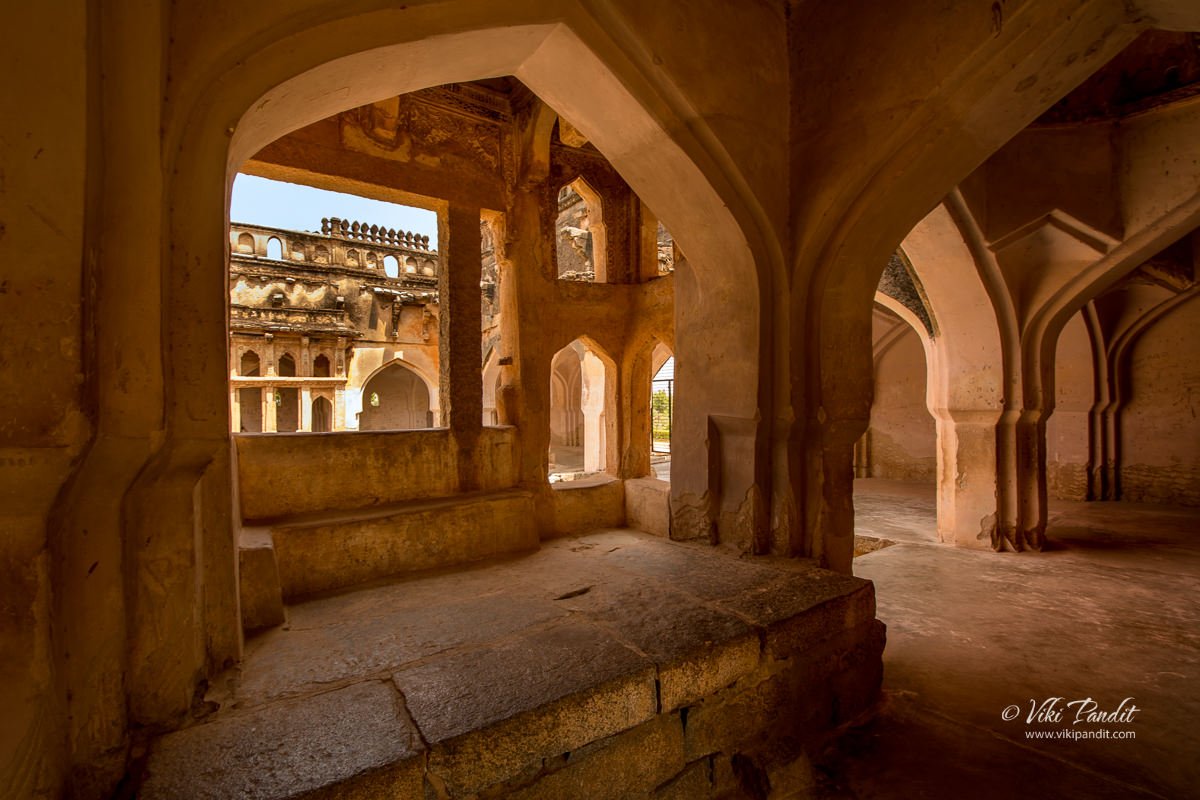


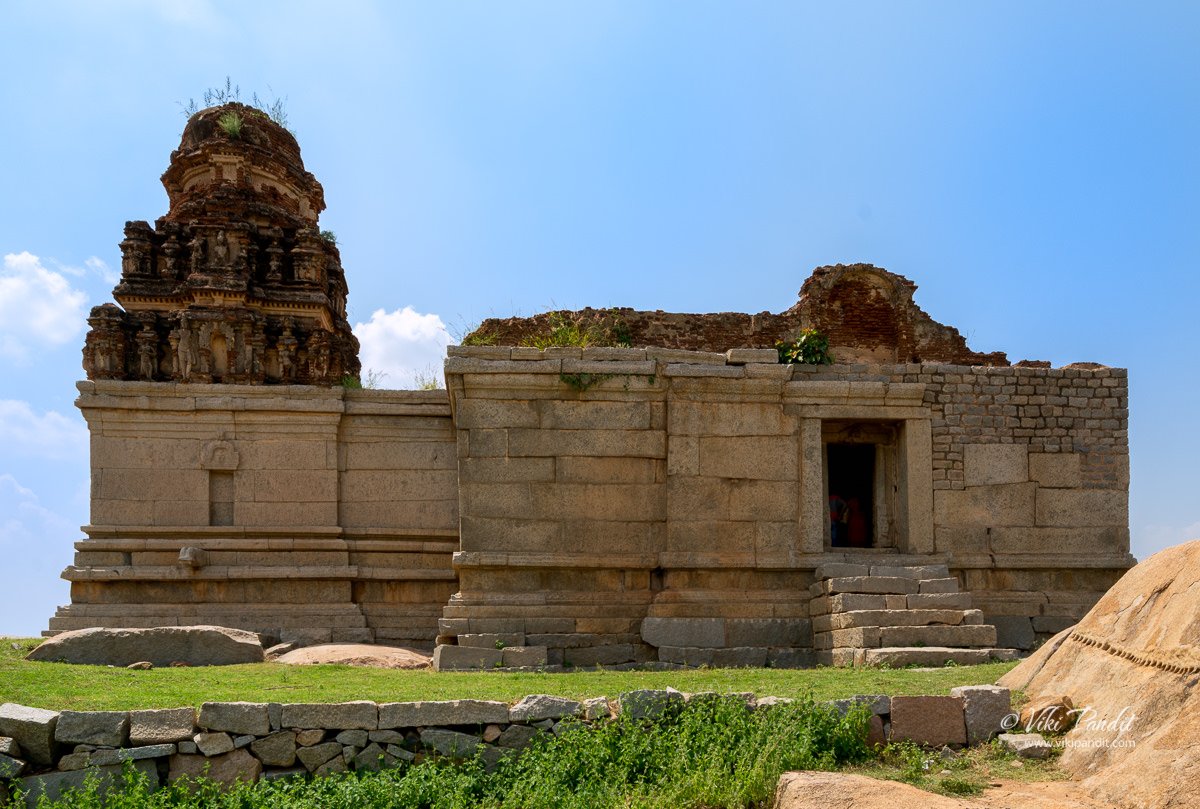


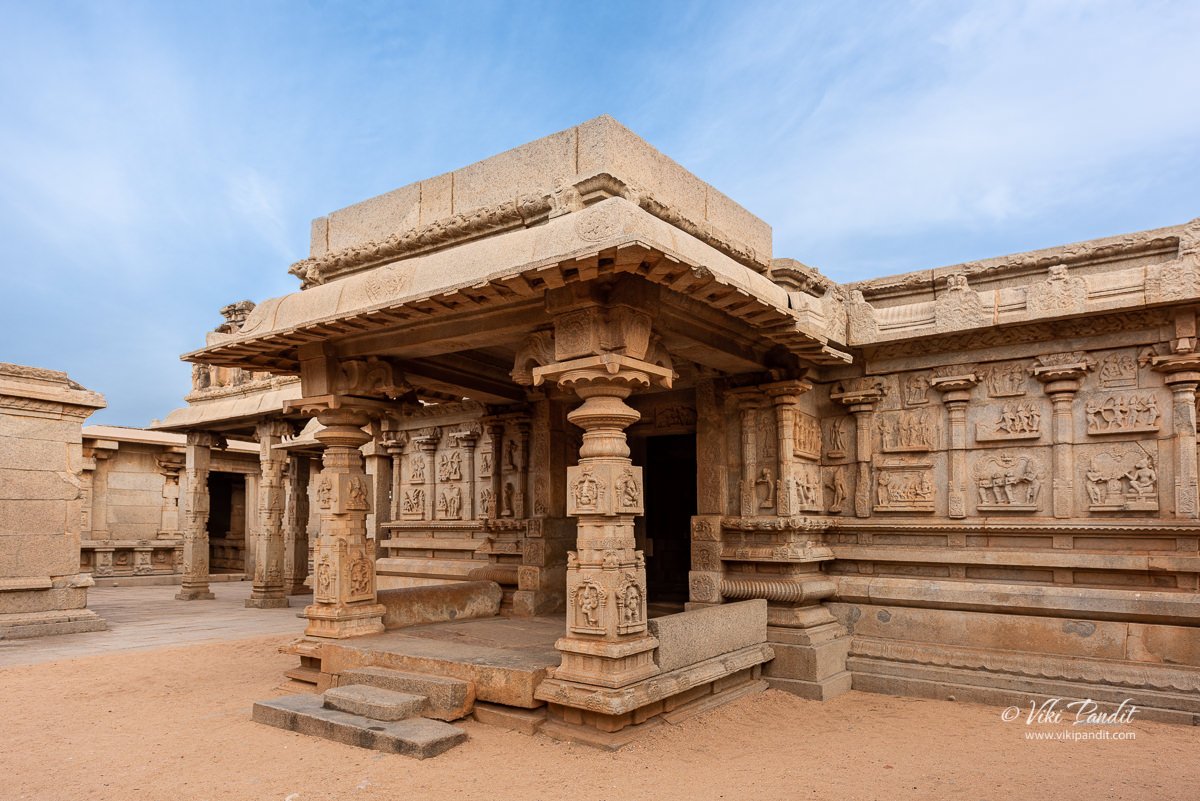





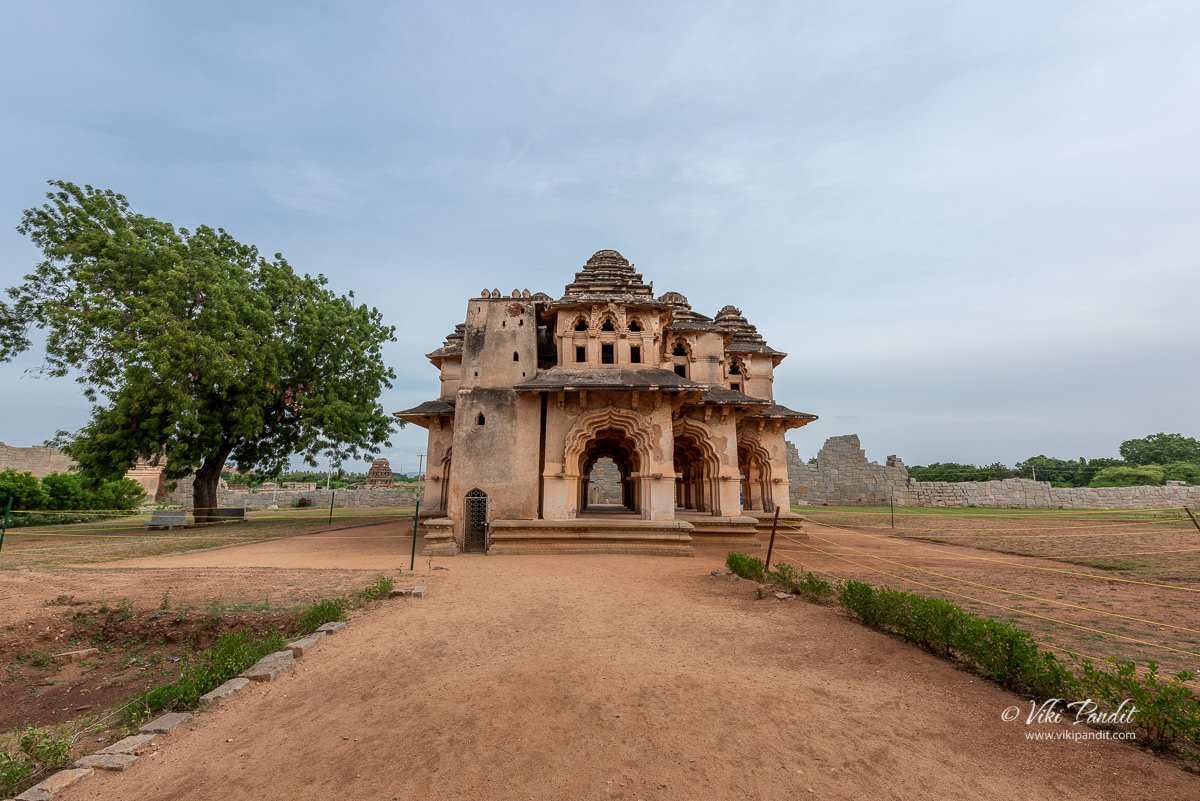



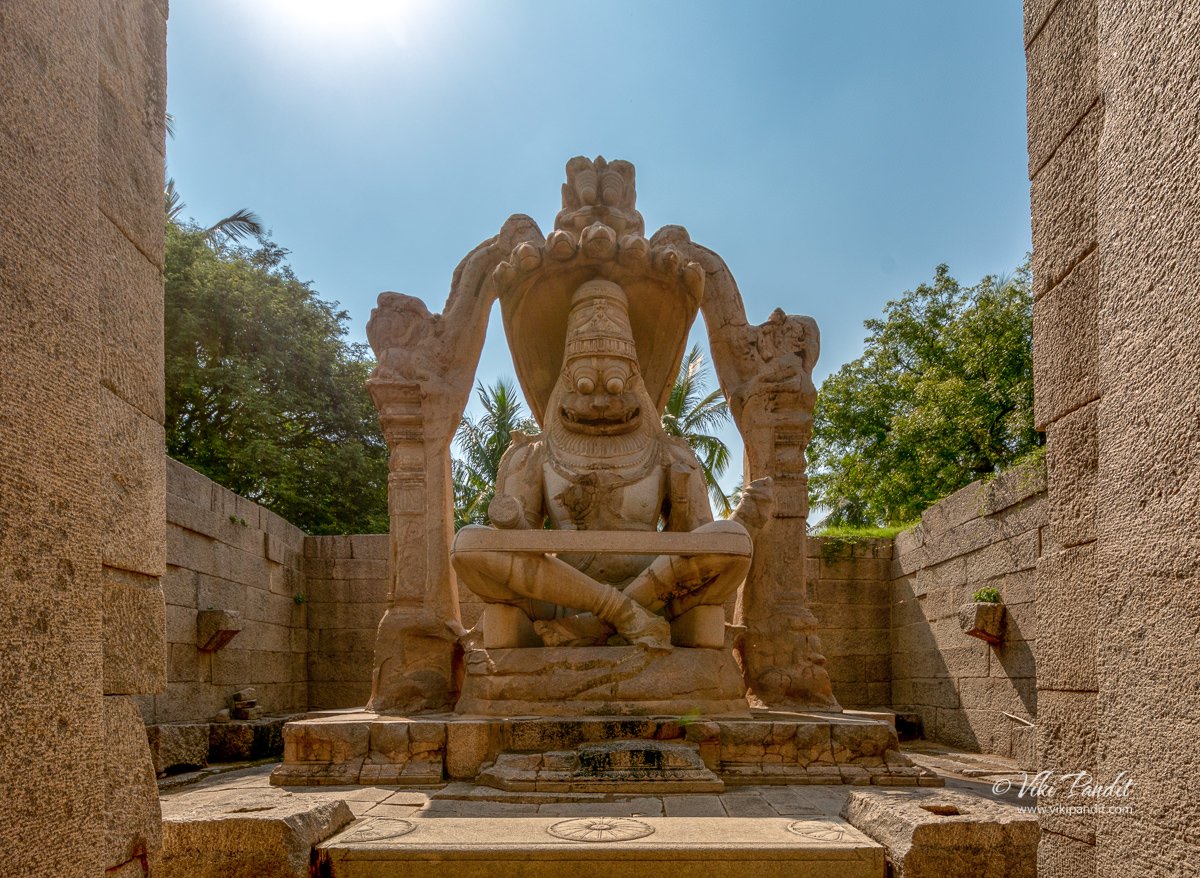



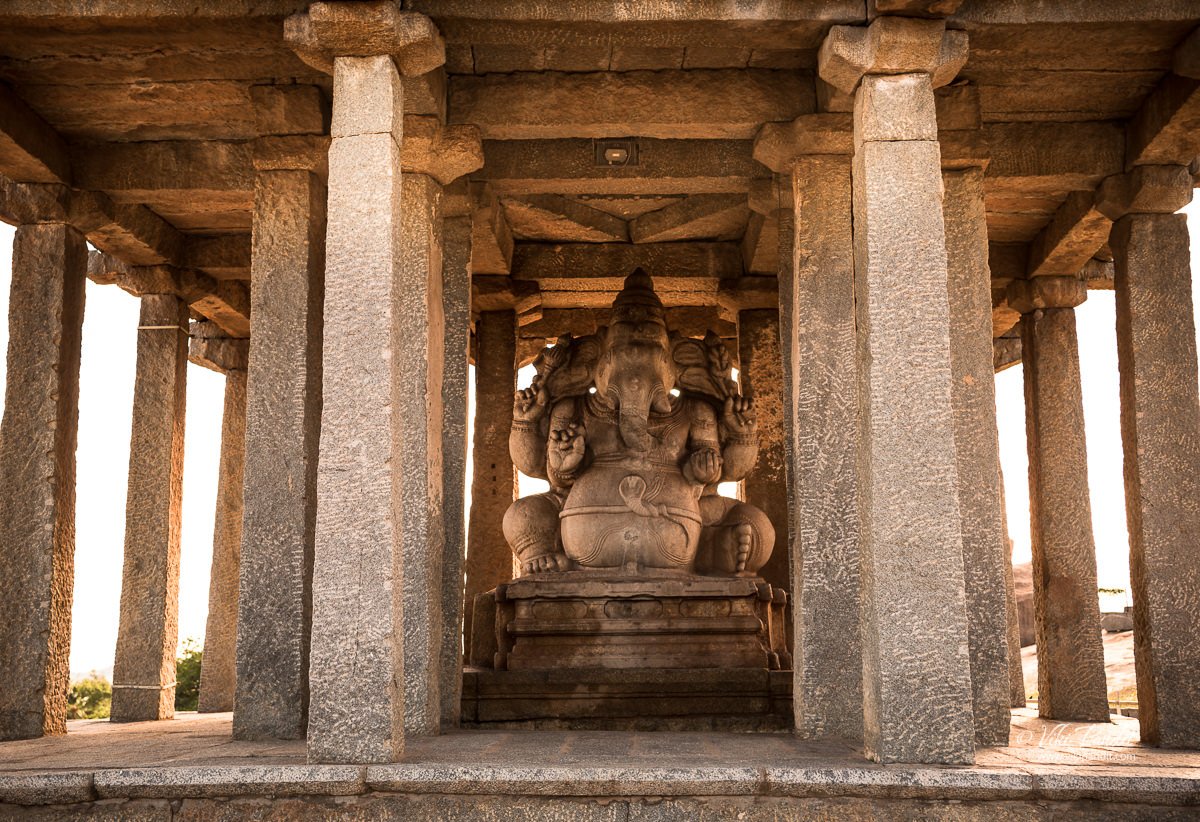



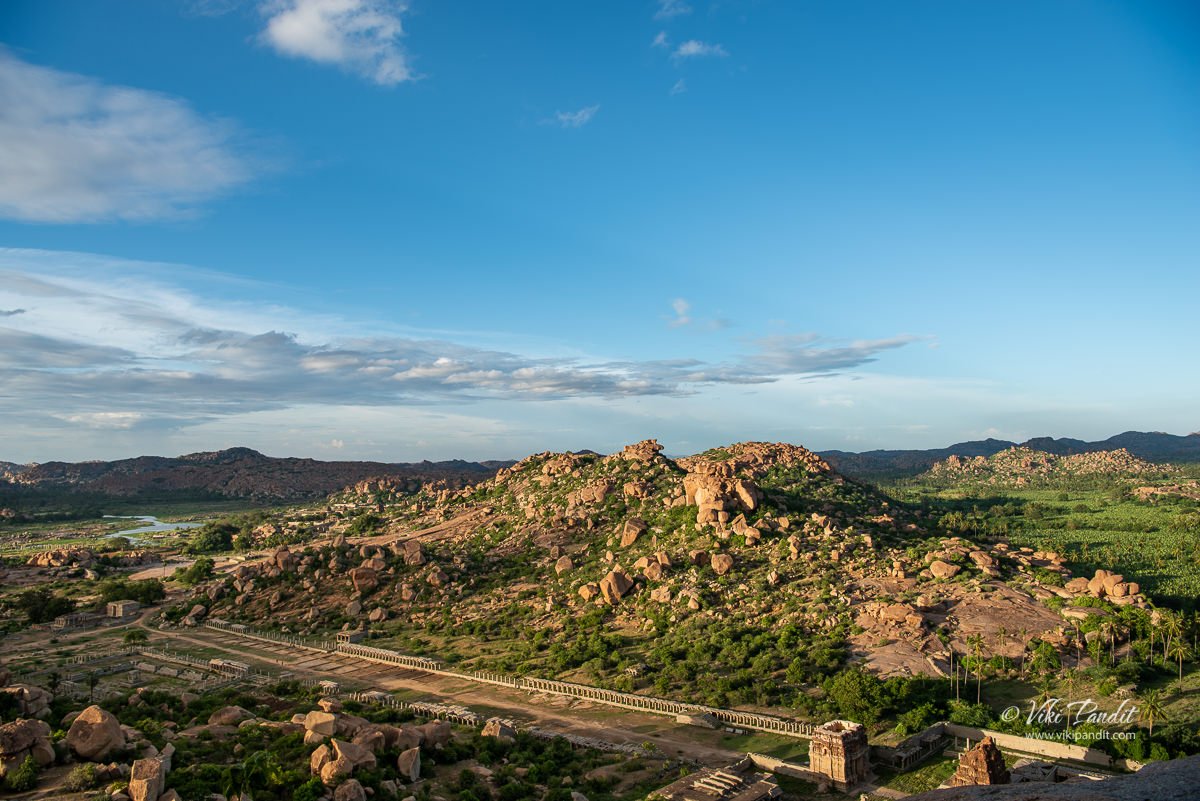
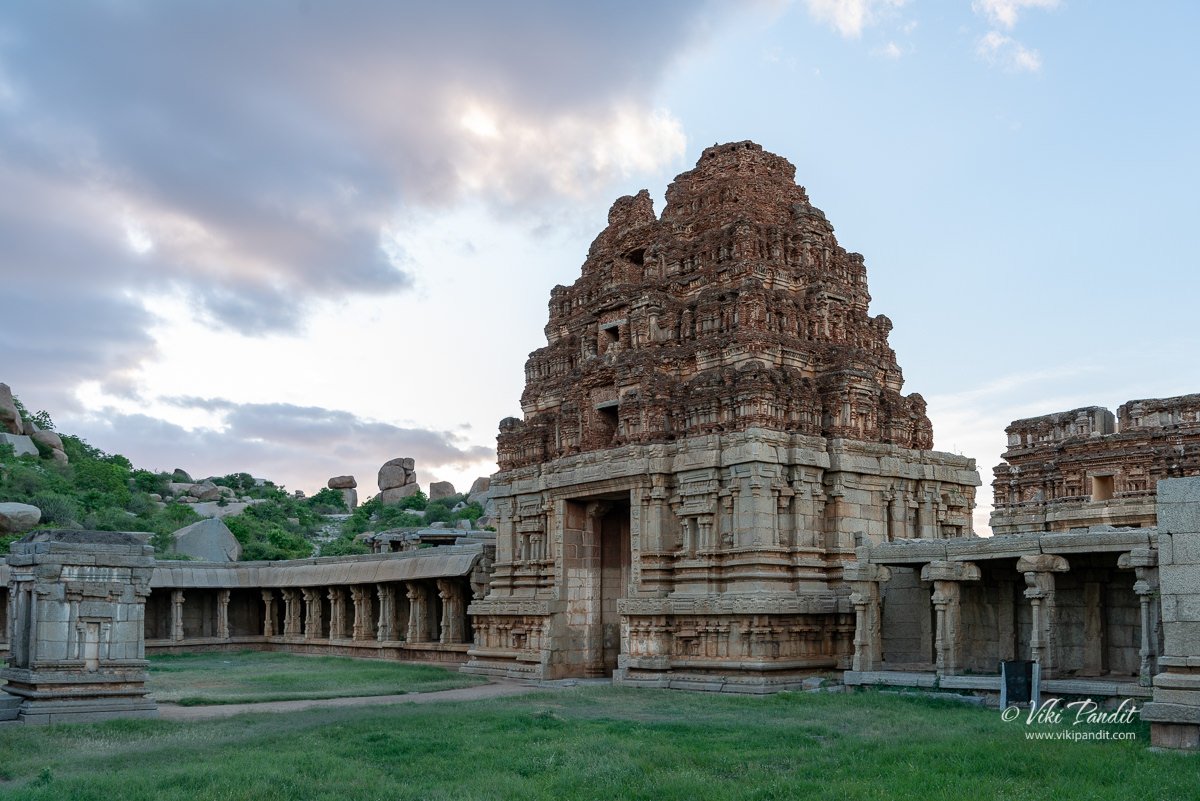

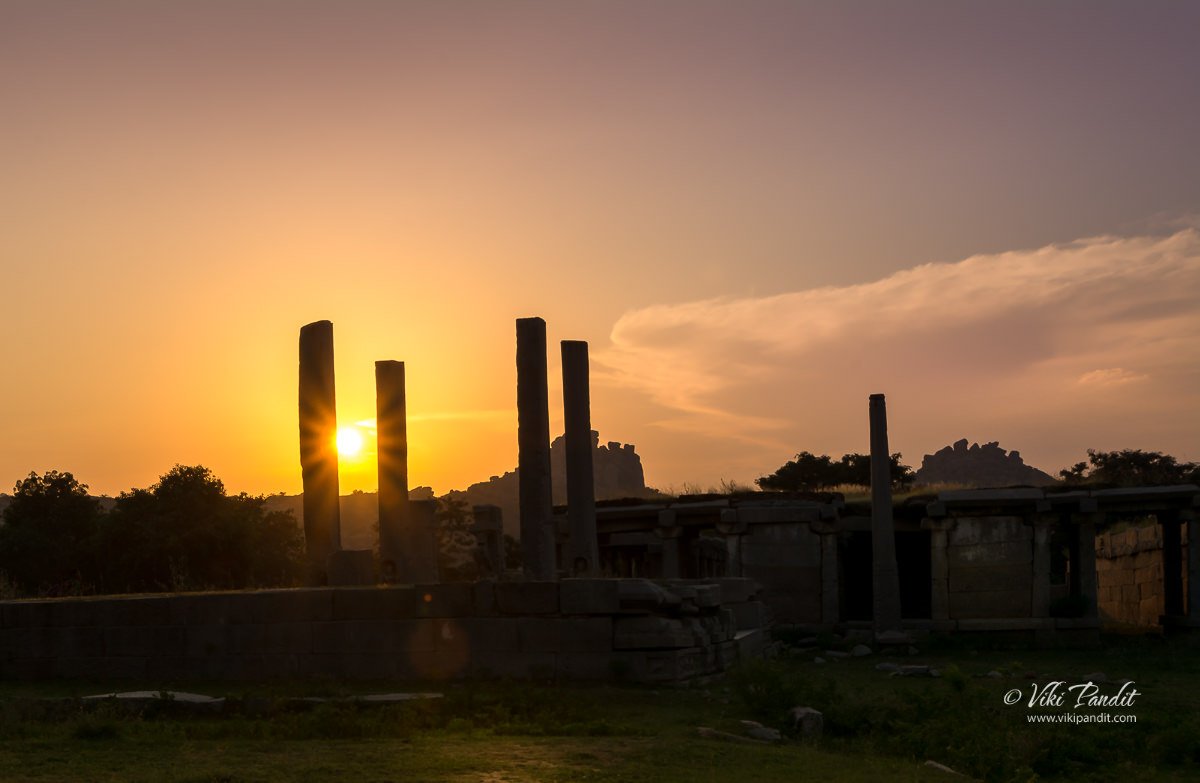


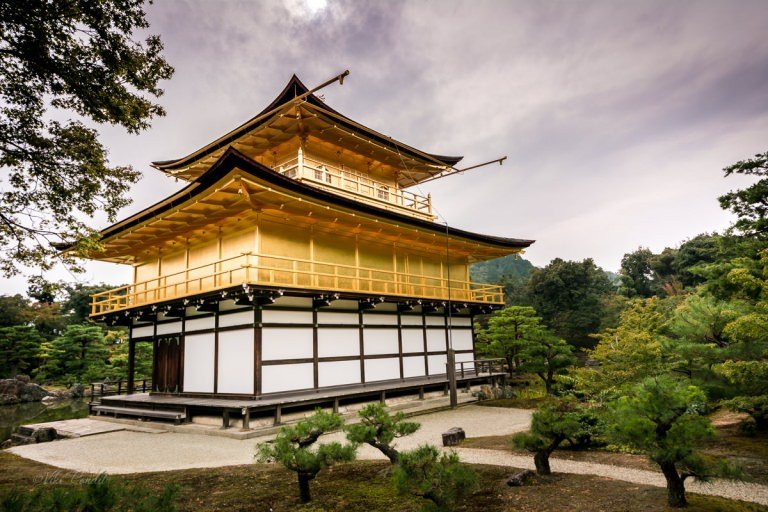
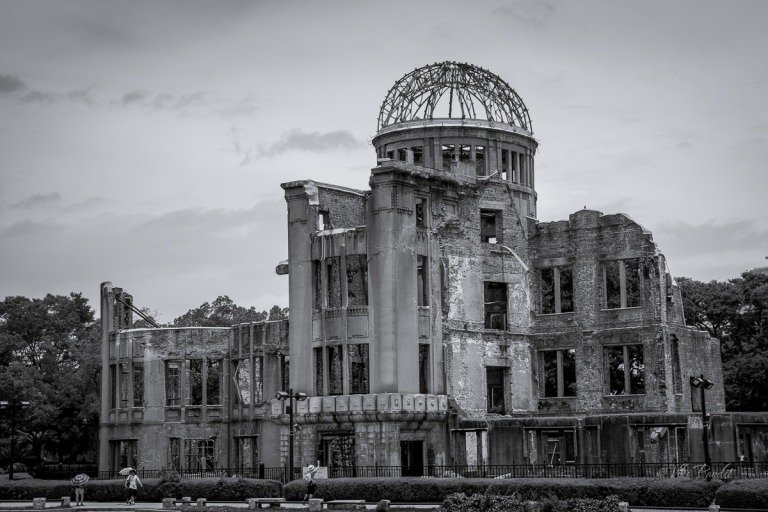

I wanted to convey my enthralled feelings after reading the whole story. Your way of depiction led me to a new unknown world which flashed like a movie in my mindset. The vivid pictures added a flavour of heritage and felt so true to my eyes as if I was already there! The climax of the journey was also very adventurous. Thanks for sharing such a wonderful unknown past.
That is an insightful read. The pictures are conveying the rich history of our ancestors. I am planning to visit Hampi next month and I was wondering if you could help me with the exact name of the place titled ‘Ruins of an ancient Shiva Temple in Hampi’ (the last photograph in this article). I will be indebted to you. Thank you!!
Hi Swarnali,
Thanks for your comments. The Shivalaya that you are talking about lies beyond the bazaar area on the north side of Vitthala temple. To be precise, at the Vitthala temple entrance gate, just keep going to your right. You can find more information here: https://www.vikipandit.com/vijaya-vittala-temple/ I hope you have a lovely time in Hampi.